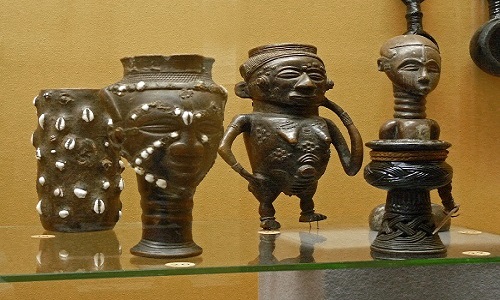43,223 total views, 2 views today
Meaning and Definition of Museum
The word museum is derived from the Latin word “Museion” and can be pluralized as Museums or A museum is defined as a building where historical arts, artifacts, works, sculptures, objects of cultural or biological interests are stored, preserved, studied and shown to the students and the general public. Interesting and valuable objects that have historical stories and values are collected and kept in the museum. They are educational and at the same time centers of amusement thereby being of relevant importance to the education, tourism, Art, and Entertainment industries.
Museums were private in the past as people and family members make them available for people in exchange for money. They were later made public although it is now little or no fee charge or charges for entering a museum. The little fee charged is used for maintenance and staff salaries. They can be seen in cities, towns, schools, and institutions. Physical contact with the objects and the taking of pictures are not allowed in a museum. A guide, who must be familiar with the culture or ideas peculiar to the museum visited, is always available so as to assist the visitor in his trip while at the museum. ( Read an interesting article on the influence of colonial rule on Nigeria’s culture and tradition here)
Types, Forms, and Classifications of a Museum
-
Historical Museums
They are the buildings that contain information about the past, history, historical events and past documents and stories about a place or people. Historic houses, antiquities are examples of historical museums.
-
Natural Museum/Natural History Museum
They exhibit facts and works that focus on the natural world, natural environment, culture, ancient history, archeology among others. (Read on culture and its characteristics here)
-
Art Museum
Arts, paintings, drawings, illustrations, sculptures, furniture, metalwork, ceramic works, book arts are kept and being displayed for exhibition in an art museum.
-
Science Museum
This museum is a building where scientific and technology histories and facts are being collected, kept and made public for study and research purpose. In this type of museum, teaching aids are made available to the researchers. They focus on topics like the planet, earth movement, animals, and documentaries. (How The Environment Affects Our Health)
-
Zoological Gardens/Museum
A zoo is also a museum: a place where animals are collected and kept to educate people or serve as a means of amusement. This type of museum is the only living-museum because it contains living beings. Animals that are non-domestic (wild animals) like lion, elephants, crocodile, tortoise etc. are kept and seen in the zoo. Their actions and behaviors of animals are also studied in their natural habitat. (What You Need To Know About Goats)
-
Open Air Museum
Just like the name “open-air”, this category of museum collects and build old houses and past structures, mostly wooden structures, in a large open space for the use of people.
-
Music Museum
They are created to pay homage and respect for the old musicians in the world. They are meant for the lovers of sounds or musical instruments or for research purpose. (All You Need To Know About The Aye-Aye)
-
Mobile Museum
Are places where different cars and vehicles are made open for exhibition.
Advantages, Benefits, and Importance of Museums
The creation of museums is important to children, students, society and the whole of mankind. at large. Some of the reasons why the museum is important and beneficial include;
-
Storage of Historical Objects
If not for museums, the collection and housing of old artifacts, objects, sculptures, arts will not be possible. These historical objects may have been a thing of the past and will not be made available for studying or for reference purpose without the museum.
-
Educational Purpose
Many things that were being taught in classes as theory can be studied further by visiting the museums. There is a belief that what we see stays longer than what we read. Seeing what is being taught in class helps in retaining knowledge. Museum also exposes more that are being taught by teachers. They serve as research avenues and venues where histories and dates can be traced and found. (19 Things You Should Do to Attain Academic Excellence)
-
Entertainment Purpose
Some people visit the museum for sight-seeing and to reduce stress, depression, anxiety, and worries. Learning even takes place through the sight-seeing process. Schools take their pupils or students on excursions to places like museums and zoos. ( Read about stress and how to manage it here)
-
Promotes Culture
Natural and historical museums help to preserve and promote our cultural heritage. They serve as the reminder to traditions and past glories and events. Read an interesting article on How Modern Medicine Came Into Nigeria here
If you find this Article interesting, please “Like” and “Share” it on Facebook and Twitter by clicking the buttons below. Also, don’t forget to drop a comment. Thanks

My son’s birthday is in the last week of September, and I was thinking of renting a museum venue for him and his friends to celebrate the occasion since that’s what he had in mind. It’s great that you mentioned that aside from educational purposes, people visit museums for entertainment as well since the sightseeing process helps reduce stress and depression. I’ll keep this in mind while I look for a museum venue in Norfolk that can be rented for my son’s birthday soon.
You are welcome, thank you
Ok bye
U didn’t give me the 10 I want
We can not give, we are so sorry
You did not give me 10 importance of museum for students
Are you a teacher ?
No
I really enjoyed the information about museums. Would you please email it to me.
xngece@gmail.com is my email address.
I think it’s the best
No